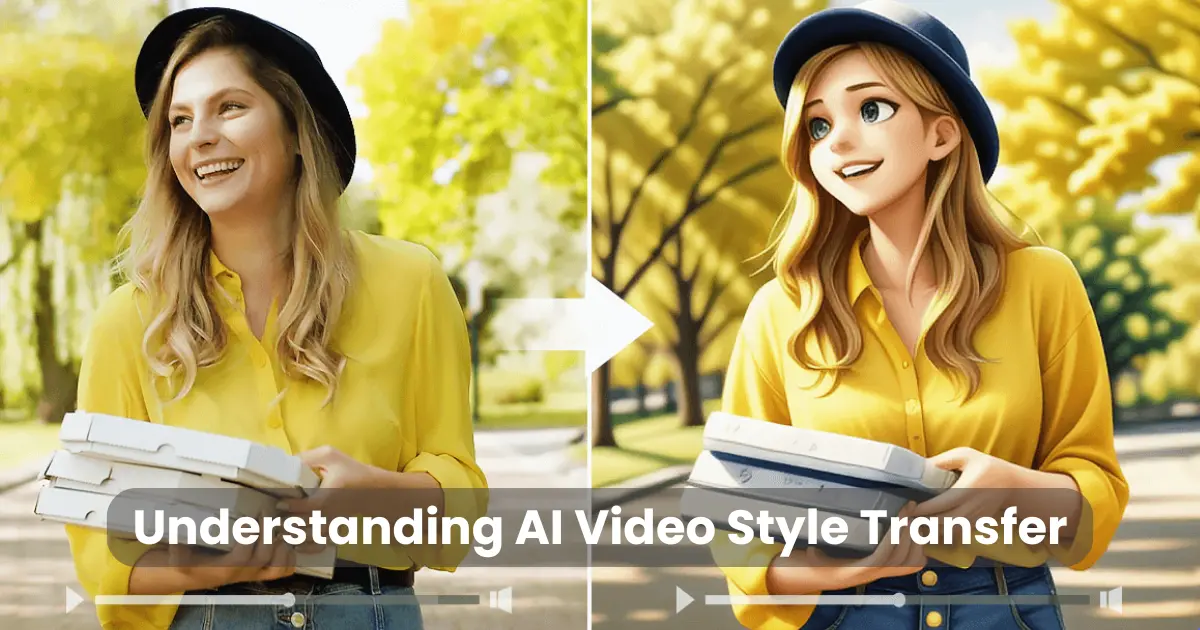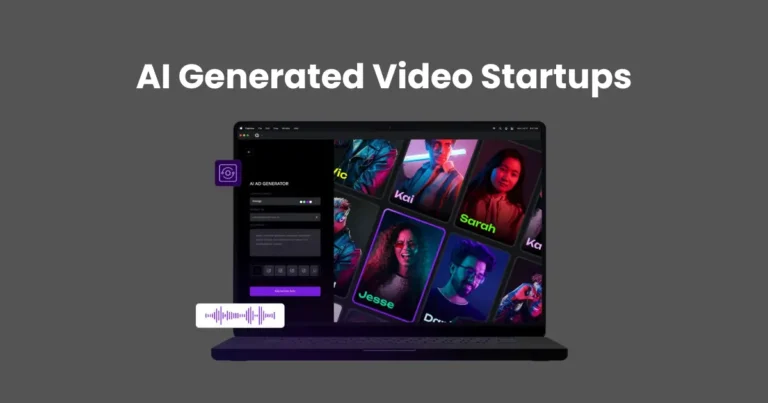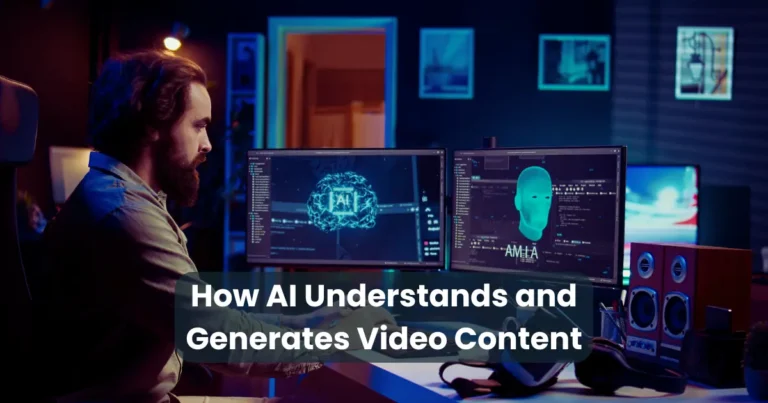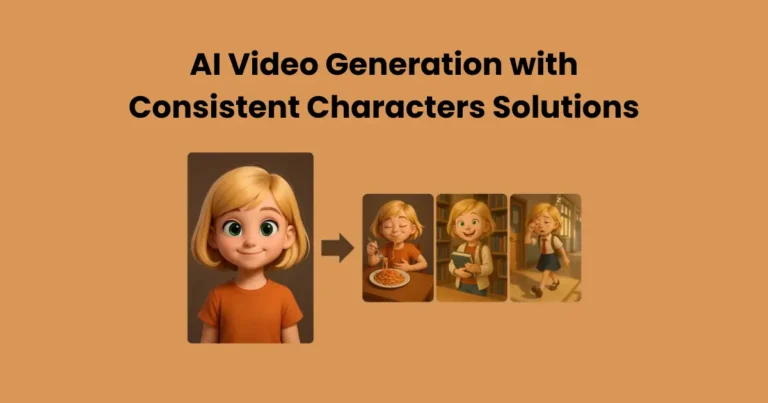Understanding AI Video Style Transfer

Contents
In today’s digital age, understanding AI video style transfer is becoming increasingly important for creators, developers, and tech enthusiasts alike. This innovative technology allows users to transform ordinary videos into artistic masterpieces by applying the visual style of one image or video to another. From reimagining footage with the brushstrokes of Van Gogh to stylizing real-time game environments, AI video style transfer opens the door to limitless creative possibilities.
As artificial intelligence continues to evolve, this technique not only enhances visual storytelling but also streamlines content production across various industries. In the following sections, we’ll explore how it works, its benefits, applications, and what the future holds for this groundbreaking tool.
What Is AI Video Style Transfer?
AI video style transfer is a process where artificial intelligence applies the visual appearance of one video or image to another video, creating a completely new stylized output. This goes far beyond typical video filters. Instead of simply adjusting color or contrast, the system uses deep learning to reinterpret every frame with artistic features from a reference style.
For example, imagine turning a regular video clip into something that looks hand-painted or resembles a famous artist’s work. With the help of neural networks, particularly convolutional neural networks (CNNs), the AI learns the content structure of the original video and blends it with the stylistic elements of another media source. The result is a seamless transformation that maintains the motion and meaning of the original video while presenting it in a new visual language.
Understanding AI video style transfer helps creators unlock powerful tools that merge art and technology. Whether used in films, advertisements, or social media, this technique brings a fresh, engaging aesthetic to modern video content.
How Does AI Video Style Transfer Work?
To truly benefit from understanding AI video style transfer, it’s essential to know how the process operates behind the scenes. At its core, this technique uses deep learning models, particularly Convolutional Neural Networks (CNNs), to analyze and transform visual data.
Here’s a simplified breakdown of how it works:

1. Input Two Key Elements
The process starts by feeding the system:
- A content video (the original footage).
- A style image or video (the artistic reference you want to apply).
2. Feature Extraction
The neural network analyzes the content video to detect shapes, objects, and motion. At the same time, it examines the style input to identify textures, colors, and brushstroke patterns.
3. Style Transfer Process
The AI blends the content structure with the extracted style using a loss function, which measures how well the output retains the original video’s form while mimicking the style. It continuously adjusts until it achieves a balanced, stylized result.
4. Temporal Consistency
Since videos involve motion, the system must ensure temporal coherence. Advanced models like ReCoNet or TecoGAN handle this by tracking objects across frames and maintaining consistency to avoid flickering or distortion.
5. Rendering the Final Output
Finally, the processed frames are stitched together to form a stylized video that maintains the content’s integrity while showcasing the chosen artistic flair.
Understanding AI video style transfer at this level reveals its complexity and the brilliance behind its visual magic. With constant advancements, the process is becoming faster, more accurate, and even accessible in real-time applications.
Benefits of AI Video Style Transfer
Once you begin understanding AI video style transfer, it’s easy to see why it’s gaining popularity across industries. This innovative technology offers a wide range of benefits, from saving time to enhancing creativity. Below are the most notable advantages:

1. Creative Freedom
AI video style transfer allows artists and content creators to experiment with different visual styles effortlessly. Whether you want to replicate classic art, mimic comic book aesthetics, or invent a unique style, the possibilities are virtually limitless.
2. Time Efficiency
Manual frame-by-frame editing is time-consuming. With AI handling the style transfer process, creators can stylize entire videos in a fraction of the time. This speed enables faster content production without sacrificing quality.
3. Cost Savings
Traditionally, applying visual effects or artistic styles required large teams and costly software. AI video style transfer significantly reduces production costs by automating the process with minimal manual input.
4. Enhanced Visual Appeal
By transforming videos into dynamic, stylized visuals, AI enhances viewer engagement. This can be a game-changer for marketers, educators, and filmmakers looking to stand out.
5. Accessibility and Scalability
Thanks to user-friendly platforms and cloud-based solutions, this technology is now accessible even to non-experts. You can stylize multiple videos across campaigns or platforms, ensuring a consistent yet creative visual identity.
Understanding AI video style transfer not only highlights its technical strengths but also its practical value. It empowers creators, saves time and money, and delivers stunning visuals with ease.
Popular Techniques and Algorithms
To deepen your understanding of AI video style transfer, it’s helpful to explore the most commonly used techniques and algorithms that power this transformative process. These methods rely on deep learning architectures and mathematical models that analyze and manipulate visual information with precision.

1. Neural Style Transfer (NST)
One of the foundational methods, Neural Style Transfer, uses convolutional neural networks (CNNs) to blend the content of one image or video with the style of another. Initially developed for images, this technique has been extended to handle video by processing frames individually or with added temporal consistency.
2. ReCoNet (Recurrent Convolutional Network)
ReCoNet is specifically designed for real-time video style transfer. It ensures temporal coherence, meaning it prevents flickering or jittering by referencing previous frames. ReCoNet strikes a balance between speed and stability, making it ideal for live video applications.
3. TecoGAN (Temporal Coherence GAN)
TecoGAN uses Generative Adversarial Networks (GANs) to generate high-quality video frames with smooth transitions. This method is particularly effective in maintaining detail and style while avoiding visual inconsistencies from frame to frame.
4. DeepArt and Fast Style Transfer
These are more accessible implementations of style transfer, often used in mobile apps and online tools. While not always as advanced as TecoGAN or ReCoNet, they offer a great introduction to understanding AI video style transfer through user-friendly interfaces.
5. Optical Flow-Based Techniques
These methods track object movement between frames to apply consistent styling. By mapping the “flow” of motion, the algorithm ensures that stylized elements don’t jump or distort between frames.
Understanding AI video style transfer means recognizing that each technique offers different advantages some prioritize speed, others focus on quality or consistency. As the field evolves, hybrid models continue to emerge, blending the best of each approach to push visual boundaries even further.
Applications Across Industries
Once you begin understanding AI video style transfer, you’ll quickly realize how its impact extends far beyond entertainment. Various industries are embracing this technology to boost creativity, streamline production, and elevate user experiences. Let’s explore how different sectors are applying it:

1. Film and Animation
In the entertainment industry, AI video style transfer helps filmmakers create visually stunning scenes without expensive CGI or manual frame-by-frame animation. Studios can stylize entire sequences with unique artistic looks, saving time while adding dramatic flair.
2. Marketing and Advertising
Brands use stylized video content to stand out on social media and digital platforms. With AI, marketers can instantly adapt visuals to different aesthetics be it retro, abstract, or photorealistic without hiring large creative teams.
3. Video Games
Game developers implement style transfer to craft distinctive visual themes or to transform real-time gameplay footage. Some indie games even use AI to render hand-drawn-style environments from 3D models, reducing development time while maintaining artistic originality.
4. Education and eLearning
In educational content, engaging visuals help improve learning retention. AI video style transfer enables creators to enhance lecture videos, tutorials, and animations with artistic flair, making the material more captivating and memorable for students.
5. Social Media and Content Creation
Influencers and content creators leverage this technology to personalize and stylize videos in seconds. Platforms like TikTok and Instagram benefit from eye-catching filters and unique effects made possible by real-time AI processing.
6. Healthcare and Medical Visualization
While less common, some researchers use AI style transfer in medical imaging to highlight anomalies or simplify complex visuals in video tutorials for training and diagnostics.
Understanding AI video style transfer shows how its adaptability makes it valuable across a wide spectrum of industries. As AI models become faster and more refined, these applications will only expand offering new opportunities for creativity, efficiency, and impact.
Challenges and Limitations
While understanding AI video style transfer reveals its impressive potential, it’s equally important to recognize its current challenges and limitations. As advanced as this technology may be, it still faces technical and practical barriers that can impact performance, quality, and accessibility.
1. Temporal Consistency Issues
One of the most common challenges is maintaining temporal coherence across frames. If not managed correctly, style transfer can result in flickering effects or unstable motion, especially in fast-moving videos.
2. High Computational Requirements
Processing video data with deep learning algorithms demands significant computational power. Even with powerful GPUs, rendering stylized frames especially in high resolution can be slow and resource-intensive.
3. Limited Real-Time Capabilities
Although real-time style transfer is improving, achieving smooth, high-quality results on live streams or mobile devices remains difficult. Latency and quality trade-offs often occur, particularly with limited hardware.
4. Overfitting and Style Saturation
Some models can overemphasize certain style elements, leading to loss of original video clarity. This makes the output look overly stylized or visually confusing, especially when subtlety is desired.
5. Generalization and Adaptability
Understanding AI video style transfer also means acknowledging its struggle to generalize. A model trained on one style or type of video might not adapt well to different styles or content, requiring retraining or fine-tuning.
6. Ethical and Copyright Concerns
Using copyrighted artwork or signature styles without permission raises ethical and legal concerns. As AI replicates styles with high accuracy, ensuring content ownership and fair use becomes increasingly important.
Despite these limitations, the field is progressing rapidly. New models are being developed to address these weaknesses, improving speed, flexibility, and consistency. Recognizing these hurdles is essential for responsibly using and advancing the technology.
Future of AI Video Style Transfer
As we continue understanding AI video style transfer, it’s clear that this technology is still evolving. Rapid advances in machine learning, hardware, and artistic tools are shaping the next generation of video style transfer pushing creative boundaries and solving current limitations.

1. Real-Time, High-Resolution Processing
Future models are expected to deliver real-time processing in 4K and beyond, with minimal lag. Thanks to more efficient neural networks and optimized architectures, creators will soon apply complex styles instantly on mobile devices, live streams, or VR content.
2. Greater Temporal Consistency
With developments in temporal-aware algorithms, future tools will reduce flickering and jittering significantly. This means more stable results across frames, even during fast camera movements or detailed scene transitions.
3. User-Controlled Style Customization
Next-gen AI will allow dynamic control over style intensity, region-specific styling, and blending multiple styles in one video. This level of flexibility will empower creators to fine-tune their output without needing deep technical skills.
4. Integration with AR/VR and Metaverse Content
AI video style transfer will likely play a major role in immersive media. Whether it’s stylizing real-time avatars in the metaverse or transforming live AR scenes, AI will help users personalize their virtual experiences like never before.
5. Low-Code and No-Code Platforms
As more creators seek accessibility, expect to see a rise in low-code or no-code platforms that bring powerful AI capabilities to mainstream users. Drag-and-drop interfaces and cloud rendering will simplify the entire workflow.
6. Ethical and Responsible AI Use
Understanding AI video style transfer in the future also means emphasizing ethical frameworks, copyright protection, and AI transparency. Tools will likely incorporate built-in style verification or fair-use indicators to ensure creative integrity.
The future of AI video style transfer is promising and transformative. With ongoing research and innovation, the technology is set to become a staple in digital storytelling, education, entertainment, and beyond offering unprecedented creative freedom and efficiency.
Conclusion
Understanding AI video style transfer is essential for anyone looking to stay ahead in digital content creation. This groundbreaking technology combines the power of artificial intelligence with the beauty of artistic expression, enabling users to reimagine video content like never before. From filmmaking and marketing to education and gaming, its applications are expanding rapidly across industries.
Despite current challenges like high computational demands and temporal instability AI video style transfer is evolving quickly. With advances in real-time processing, intuitive user control, and ethical integration, the future promises more accessible, powerful, and responsible tools for creators of all skill levels. By understanding AI video style transfer, you not only gain insight into a cutting-edge creative tool but also unlock the potential to tell more engaging, visually compelling stories in any medium. As this technology matures, those who embrace it early will have a distinct edge in both innovation and impact.






